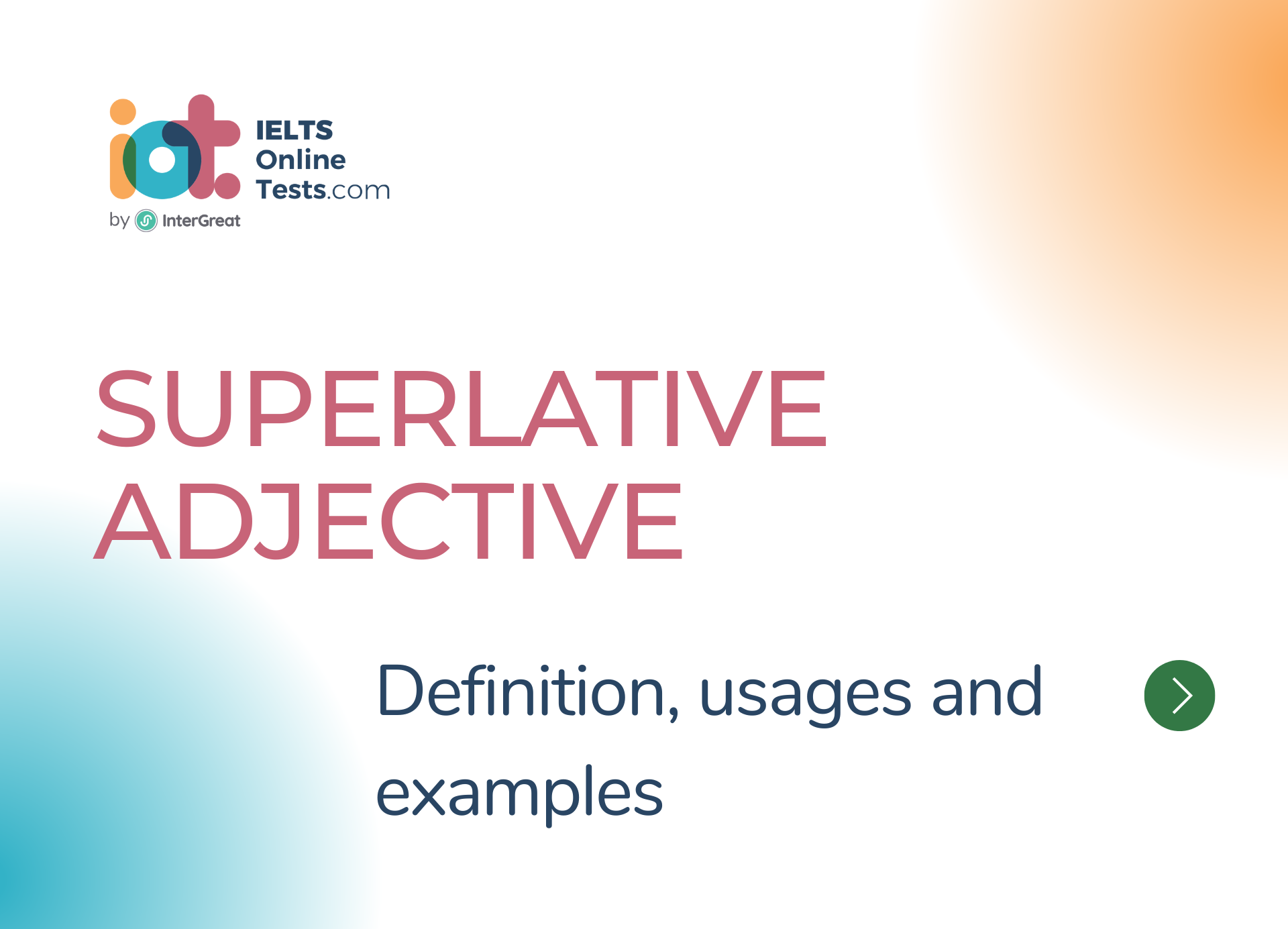
Superlative adjective definition, usages and examples
Superlative adjectives are used to describe the highest or lowest degree of a quality among three or more things. They indicate the utmost or extreme level of a characteristic.
Here are some key points about superlative adjectives:
Definition: Superlative adjectives modify nouns by expressing the highest or lowest degree of a quality when comparing three or more things.
Formation: Most superlative adjectives are formed by adding "-est" to the base adjective for one-syllable adjectives, or by using "most" before the adjective for adjectives with two or more syllables.
- Example:
- "tall" (one syllable) becomes "tallest,"
- Small: "This is the smallest house in the neighborhood."
- Happy: "She is the happiest person I know."
- Sad: "It was the saddest movie I've ever seen."
- Bright: "He has the brightest smile."
- Strong: "She is the strongest athlete in the competition."
- "beautiful" (two syllables) becomes "most beautiful."
- Intelligent: "He is the most intelligent student in the class."
- Delicious: "This is the most delicious cake I have ever tasted."
- Interesting: "It was the most interesting book I've read."
- Difficult: "That was the most difficult exam I have ever taken."
- Comfortable: "This is the most comfortable chair in the house."
- "tall" (one syllable) becomes "tallest,"
- Example:
Three-Item Comparison: Superlative adjectives are used when comparing three or more things or individuals.
- Example:
- "She is the tallest girl in the class,"
- "This is the most beautiful flower in the garden."
- Example:
Superlative Marker "The": The definite article "the" is used before the superlative adjective to indicate that it is the highest or lowest degree.
- Example:
- "He is the fastest runner in the race,"
- "It was the most memorable experience of my life."
- Example:
Degree of Comparison: Superlative adjectives indicate the highest or lowest degree of a particular quality among three or more things.
- Example:
- "He is the smartest person I know,"
- "This is the least expensive option."
- Example:
Irregular Forms: Some adjectives have irregular superlative forms that do not follow the standard "-est" or "most" pattern.
- Example:
- "good" becomes "best,"
- "bad" becomes "worst,"
- "far" becomes "farthest" or "furthest."
- Little: "She has the least amount of experience."
- Many: "He has the most friends of anyone I know."
- Much: "She has the most money in the group."
- Example:
Agreement: Superlative adjectives do not change based on the number or gender of the noun they modify.
- Example:
- "The tallest trees,"
- "The most interesting books."
- Example:
Superlative adjectives help us describe the highest or lowest degree of a quality among three or more things. By using them appropriately, we can emphasize the extremes and create more impactful descriptions.




